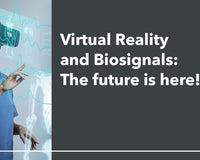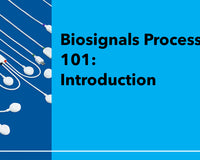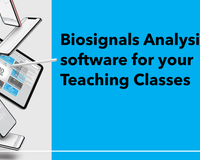4 Tips for diving into the world of biosignals 😎
🤔Are you unsure where to begin and what options you have when starting to work with biosignals?
💪To help you learn more about biosignals when you are unsure how to approach the subject or what resources and tools can be used we have put together a brief compendium of steps for you to follow-up.
STEP 1: Getting Started
If you have a brand-new research or business idea related with biosignals, we encourage you to first conduct a preliminary analysis of the state of the art, review the relevant scientific literature, and choose the best biosensor setup for your biosignals-based project according to the recommendations of the scientific community. Of course, the imagination is the limit and you can always try wacky things.
There are a wide range of studies already conducted in the biosignals field and with the pandemics we observed a boom in the number of projects requiring the use of biosensors (Halem et. al 2021).
Our solutions have been supporting researchers and teachers all around the globe with references found in hundreds of publications. Reason why we invite you to take a look on the outputs coming from our community when using BITalino or biosignalsplux systems, our biosignals acquisition platforms.
STEP 2: Select the biosignals acquisition system
By observing our teaching & research community, we can infer that more than half (~52%) of them are working in the Biomedical Engineering field followed by those belonging to non-engineering fields such as Psychophysiology. Typical biosignals set-up among the different activity sectors includes the using of electrocardiography (ECG), electromyography (EMG) and electrodermal activity (EDA) sensors.
Usually, and if you are a newbie, we suggest that you start exploring the ECG signal, which has a very particular waveform, simple to recognize and with straightforward peak identification. Although, in clinic context it involves a very complex interpretation.
The following recommendations will have a major focus on the ECG signal.
🤖 “Makers the Builders”
For all those who like to build everything from the scratch - yes! You, who are a maker - we can share some examples of what you can do with an ECG signal.
👇
→ How to build a DIY heart and activity tracking device
→ Gift Away Your Heartbeat for Valentines Day! | Arduino Tutorial
🤓“Students & Teachers the Masters”
For Teachers & Students, we assume that you prefer to have a commercial and pre-built system to get started, reason why we already did a small compendium on the Essential Biosignals Kits for your Teaching Classes.
Don’t worry if you prefer to work with other platforms - such as Arduino. Our sensors were designed to be compatible with 3rd party solutions as well (e.g. ECG Sensor + Arduino Sensor Cable).
🧐 “Researchers the Gurus”
If you are a researcher willing to use a fully wireless wearable to collect raw ECG together with mobility data over brief periods of time, you should read more about the CardioBAN, our newest and most cutting-edge wearable solution. You can also learn more about our biosignalsplux SOLO and ECG Sensor if you intend to take the most out of the device and connect any other sensors.
If you have a lot of expertise working with biosignals and wish to combine other various sensors at once than you should try the Kit Builders the ideal tool to assist you build up the system for your lab.
STEP 3: Signal Acquisition & Recording
Once you have everything set, the next step is to design the goals of your experiment and select the suitable toolbox or software for the ECG acquisition & visualization. At this stage you have several options as well. You can either use our Official PLUX Application Programming Interfaces (APIs) or OpenSignals (r)evolution software.
OpenSignals is our easy-to-use and versatile software that is suitable for real-time biosignals visualization and compatible with all our devices. Core functionalities include sensor data acquisition from multiple channels and devices concurrently, data visualization and recording.
You might also prefer to use other biosignals software and that's why the OpenSignals (r)evolution software comes with built-in streaming & 3rd-party integration possibilities to connect PLUX devices to third-party solutions. The available options include the Lab Streaming Layer and TCP/IP streaming features.
STEP 4: Data Analysis & Feature Extraction
In addition, OpenSignals has some add-ons for data analysis, including the report generation from the recorded data and features extraction directly from the signals without having to do any coding.
Alternatively, you can explore some of the signal processing toolboxes we listed for you in our “Open-source software for biosignal processing” article, to easily extract some of the relevant features from your ECG signal.
🥳 And that’s it, enjoy your ECG now you have the 4 TIPS to get your BITS 😎
Author: Madalena Proença (Product manager at PLUX Biosignals)










